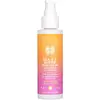What's inside
What's inside
 Key Ingredients
Key Ingredients

 Benefits
Benefits

 Concerns
Concerns

 Ingredients Side-by-side
Ingredients Side-by-side

Zinc Oxide
Cosmetic ColorantWater
Skin ConditioningCaprylic/Capric Triglyceride
MaskingSqualane
EmollientGlycerin
HumectantCetearyl Alcohol
EmollientMethyl Dihydroabietate
Sorbitan Olivate
EmulsifyingCoco-Glucoside
CleansingCetyl Palmitate
EmollientPolyglyceryl-3 Polyricinoleate
EmulsifyingCaprylyl/Capryl Glucoside
CleansingNymphaea Alba Flower Extract
Skin ConditioningAcacia Senegal Gum
MaskingEthyl Ferulate
AntioxidantXanthan Gum
EmulsifyingSodium Gluconate
Skin ConditioningLecithin
EmollientSodium Palmitoyl Proline
Skin ConditioningPolyhydroxystearic Acid
EmulsifyingEthylhexylglycerin
Skin ConditioningPhenoxyethanol
PreservativeIsostearic Acid
CleansingZinc Oxide, Water, Caprylic/Capric Triglyceride, Squalane, Glycerin, Cetearyl Alcohol, Methyl Dihydroabietate, Sorbitan Olivate, Coco-Glucoside, Cetyl Palmitate, Polyglyceryl-3 Polyricinoleate, Caprylyl/Capryl Glucoside, Nymphaea Alba Flower Extract, Acacia Senegal Gum, Ethyl Ferulate, Xanthan Gum, Sodium Gluconate, Lecithin, Sodium Palmitoyl Proline, Polyhydroxystearic Acid, Ethylhexylglycerin, Phenoxyethanol, Isostearic Acid
Octocrylene 2.9%
UV AbsorberWater
Skin ConditioningButyloctyl Salicylate
Skin ConditioningCoconut Alkanes
EmollientCalcium Sodium Borosilicate
Cetearyl Alcohol
EmollientParfum
MaskingPropanediol
SolventAscorbic Acid
AntioxidantTocopherol
AntioxidantAscophyllum Nodosum Extract
Skin ConditioningAlgae Extract
EmollientWithania Somnifera Root Extract
Skin ConditioningAloe Barbadensis Leaf Juice
Skin ConditioningCaffeine
Skin ConditioningCaprylhydroxamic Acid
Caprylyl Glycol
EmollientCellulose Gum
Emulsion StabilisingCoco-Caprylate/Caprate
EmollientCoco-Glucoside
CleansingEthyl Ferulate
AntioxidantFructose
HumectantGlycerin
HumectantGlyceryl Stearate
EmollientLauroyl Lysine
Skin ConditioningMicrocrystalline Cellulose
AbsorbentSodium Gluconate
Skin ConditioningSodium Stearoyl Glutamate
CleansingXanthan Gum
EmulsifyingOctocrylene 2.9%, Water, Butyloctyl Salicylate, Coconut Alkanes, Calcium Sodium Borosilicate, Cetearyl Alcohol, Parfum, Propanediol, Ascorbic Acid, Tocopherol, Ascophyllum Nodosum Extract, Algae Extract, Withania Somnifera Root Extract, Aloe Barbadensis Leaf Juice, Caffeine, Caprylhydroxamic Acid, Caprylyl Glycol, Cellulose Gum, Coco-Caprylate/Caprate, Coco-Glucoside, Ethyl Ferulate, Fructose, Glycerin, Glyceryl Stearate, Lauroyl Lysine, Microcrystalline Cellulose, Sodium Gluconate, Sodium Stearoyl Glutamate, Xanthan Gum
Ingredients Explained
These ingredients are found in both products.
Ingredients higher up in an ingredient list are typically present in a larger amount.
Cetearyl alcohol is a mixture of two fatty alcohols: cetyl alcohol and stearyl alcohol. It is mainly used as an emulsifier. Emulsifiers help prevent the separation of oils and products. Due to its composition, it can also be used to thicken a product or help create foam.
Cetearyl alcohol is an emollient. Emollients help soothe and hydrate the skin by trapping moisture.
Studies show Cetearyl alcohol is non-toxic and non-irritating. The FDA allows products labeled "alcohol-free" to have fatty alcohols.
This ingredient is usually derived from plant oils such as palm, vegetable, or coconut oils. There is debate on whether this ingredient will cause acne.
Due to the fatty acid base, this ingredient may not be Malassezia folliculitis safe.
Learn more about Cetearyl AlcoholCoco-Glucoside is a surfactant, or a cleansing ingredient. It is made from glucose and coconut oil.
Surfactants help gather dirt, oil, and other pollutants from your skin to be rinsed away.
This ingredient is considered gentle and non-comedogenic. However, it may still be irritating for some.
Learn more about Coco-GlucosideEthyl ferulate is an antioxidant derived from ferulic acid and ethyl alcohol. You'll most likely see this ingredient in sunscreens.
One study from 2014 found a concentration of 10% showed a similar SPF to Benzimidazole. Though this is considered a chemical UV filter, this ingredient is not listed as so. This is due to regulatory loopholes. You'll likely find this ingredient in "100% mineral" sunscreens.
This ingredient is typically found in concentrations between 0.5-1%. It is usually created synthetically or from rice bran oil.
Learn more about Ethyl FerulateGlycerin is already naturally found in your skin. It helps moisturize and protect your skin.
A study from 2016 found glycerin to be more effective as a humectant than AHAs and hyaluronic acid.
As a humectant, it helps the skin stay hydrated by pulling moisture to your skin. The low molecular weight of glycerin allows it to pull moisture into the deeper layers of your skin.
Hydrated skin improves your skin barrier; Your skin barrier helps protect against irritants and bacteria.
Glycerin has also been found to have antimicrobial and antiviral properties. Due to these properties, glycerin is often used in wound and burn treatments.
In cosmetics, glycerin is usually derived from plants such as soybean or palm. However, it can also be sourced from animals, such as tallow or animal fat.
This ingredient is organic, colorless, odorless, and non-toxic.
Glycerin is the name for this ingredient in American English. British English uses Glycerol/Glycerine.
Learn more about GlycerinThis is the synthetic salt of gluconic acid, a form of PHA and mild exfoliant.
It is mainly used to stabilize oil and butter formulations from going bad. Sodium gluconate is a humectant, pH regulator, and chelating agent.
Chelating agents help neutralize unwanted metals from affecting the formulation.
Sodium gluconate is water-soluble.
Learn more about Sodium GluconateWater. It's the most common cosmetic ingredient of all. You'll usually see it at the top of ingredient lists, meaning that it makes up the largest part of the product.
So why is it so popular? Water most often acts as a solvent - this means that it helps dissolve other ingredients into the formulation.
You'll also recognize water as that liquid we all need to stay alive. If you see this, drink a glass of water. Stay hydrated!
Learn more about WaterXanthan gum is used as a stabilizer and thickener within cosmetic products. It helps give products a sticky, thick feeling - preventing them from being too runny.
On the technical side of things, xanthan gum is a polysaccharide - a combination consisting of multiple sugar molecules bonded together.
Xanthan gum is a pretty common and great ingredient. It is a natural, non-toxic, non-irritating ingredient that is also commonly used in food products.
Learn more about Xanthan Gum